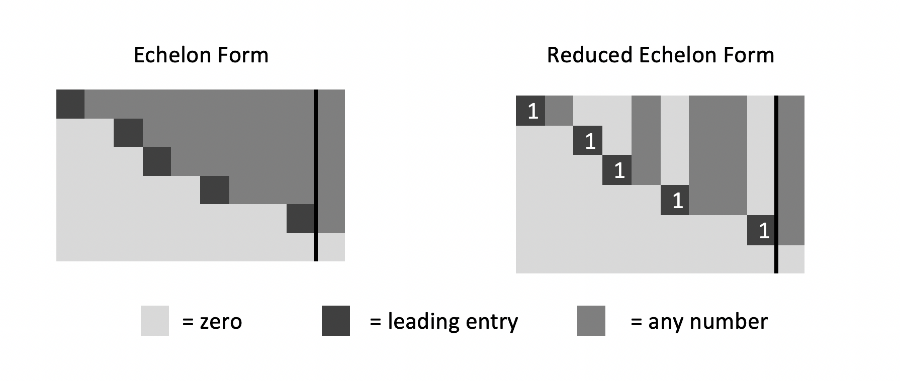Elementary Row Operations and Echelon Form
Elementary Row Operations
Given a system of linear equations, we first express it as an augmented matrix. We work on the augmented matrix by performing a sequence of the so-called elementary row operations - the operations corresponding to how we manipulate the equations in the system during the variable-eliminating process. There are only three elementary row operations:
- (Interchange) Interchange two rows (Notation: means interchange ith and jth row)
- (Scaling) Multiply all entries in a row by a nonzero constant (Notation: means multiply ith row by )
- (Replacement) Replace one row by the sum of itself and a multiple of another row (Notation: means replace ith row by the sum of ith row and times jth row)
Echelon Form
Given an augmented matrix of a system of linear equation, we say that a row in the matrix a nonzero row if at least one its entries is a nonzero entry. The leading entry is the leftmost nonzero entry (in a nonzero row).
A matrix is in echelon form (or row echelon form) if it has the following three properties:
- All nonzero rows are above any rows of all zeros.
- Each leading entry of a row is in a column to the right of the leading entry of the row above it.
- All entries in a column below a leading entry are zeros.
- The leading entry in each nonzero row is 1.
- Each leading 1 is the only nonzero entry in its column.

An augmented matrix may be row reduced (that is, transformed by a sequence of elementary row operations) to more than one matrix in echelon form. However, it can be shown that any matrix is certainly row reduced to a unique matrix in reduced echelon form.
In each of the following questions, you need to determine whether an augmented matrix is in (reduced) echelon form or not:
The augmented matrix is
The augmented matrix is
The augmented matrix is
The augmented matrix is
The augmented matrix is
The augmented matrix is